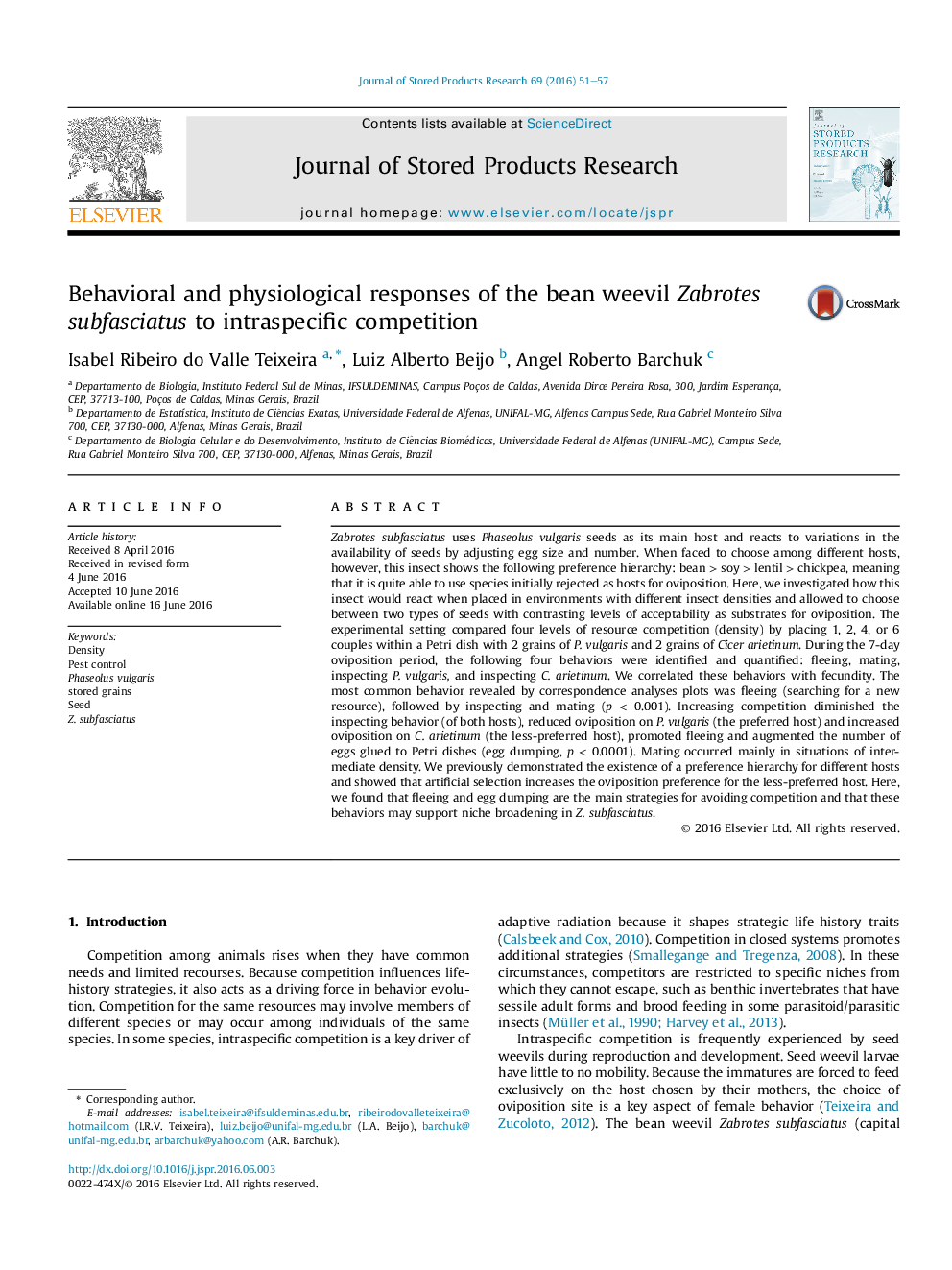| کد مقاله | کد نشریه | سال انتشار | مقاله انگلیسی | نسخه تمام متن |
|---|---|---|---|---|
| 6378296 | 1624920 | 2016 | 7 صفحه PDF | دانلود رایگان |
- Weevils show 3 main behaviors: fleeing, inspection of different seed types and mating.
- Competition (insect density) for resources alters behavioral patterns.
- Increasing competition diminishes inspecting behavior (on both tested host species).
- High competition lowers the number of eggs on P. vulgaris and increases on chickpea.
- High competition promotes fleeing and egg-dumping.
Zabrotes subfasciatus uses Phaseolus vulgaris seeds as its main host and reacts to variations in the availability of seeds by adjusting egg size and number. When faced to choose among different hosts, however, this insect shows the following preference hierarchy: bean > soy > lentil > chickpea, meaning that it is quite able to use species initially rejected as hosts for oviposition. Here, we investigated how this insect would react when placed in environments with different insect densities and allowed to choose between two types of seeds with contrasting levels of acceptability as substrates for oviposition. The experimental setting compared four levels of resource competition (density) by placing 1, 2, 4, or 6 couples within a Petri dish with 2 grains of P. vulgaris and 2 grains of Cicer arietinum. During the 7-day oviposition period, the following four behaviors were identified and quantified: fleeing, mating, inspecting P. vulgaris, and inspecting C. arietinum. We correlated these behaviors with fecundity. The most common behavior revealed by correspondence analyses plots was fleeing (searching for a new resource), followed by inspecting and mating (p < 0.001). Increasing competition diminished the inspecting behavior (of both hosts), reduced oviposition on P. vulgaris (the preferred host) and increased oviposition on C. arietinum (the less-preferred host), promoted fleeing and augmented the number of eggs glued to Petri dishes (egg dumping, p < 0.0001). Mating occurred mainly in situations of intermediate density. We previously demonstrated the existence of a preference hierarchy for different hosts and showed that artificial selection increases the oviposition preference for the less-preferred host. Here, we found that fleeing and egg dumping are the main strategies for avoiding competition and that these behaviors may support niche broadening in Z. subfasciatus.
Journal: Journal of Stored Products Research - Volume 69, October 2016, Pages 51-57
